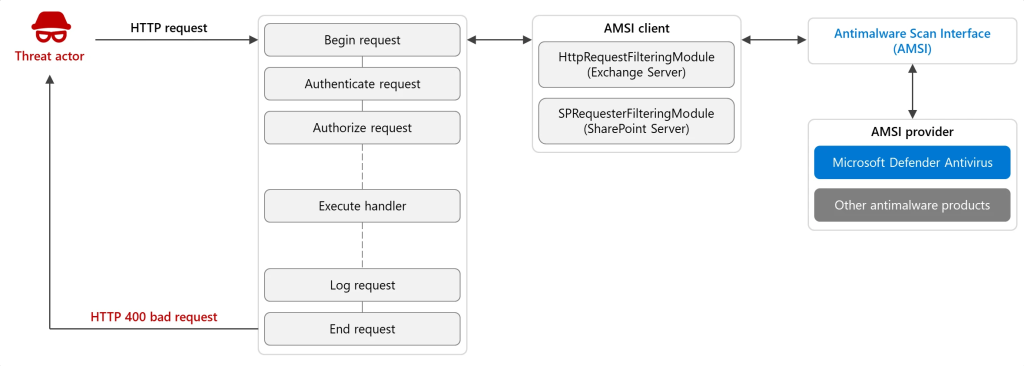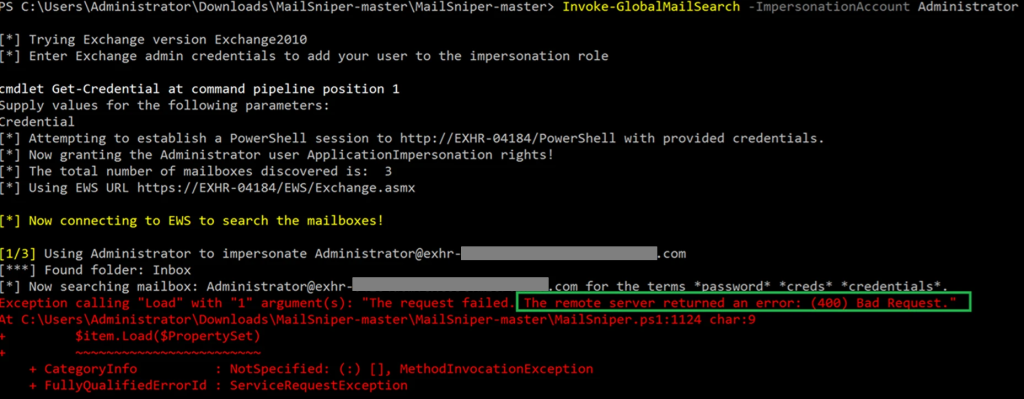Microsoft has fortified its Exchange Server and SharePoint Server security by integrating advanced Antimalware Scan Interface (AMSI) capabilities.
This measure, aimed at countering sophisticated attack vectors, represents a crucial step to safeguard on-premises infrastructure that serves as the backbone of many organizations worldwide.
Why AMSI Integration Matters
Exchange and SharePoint Servers are critical assets for businesses, often holding sensitive corporate communication and operational data.
.png
)
These servers have become prime targets for cyber attackers who exploit vulnerabilities to gain unauthorized access, execute remote code, and exfiltrate sensitive information.
Examples of historic exploits include the infamous ProxyShell and ProxyNotShell vulnerabilities in Exchange, which utilized server-side request forgery (SSRF) and privilege escalation flaws to enable remote code execution.
Similarly, SharePoint attacks have involved tactics such as stealthy web shell insertion into legitimate files like signout.aspx for persistent access.


Microsoft’s integration of AMSI into these platforms provides an essential layer of protection.
AMSI, a standard interface compatible with various antimalware products, inspects HTTP requests in real time to identify and block malicious activity before it reaches backend endpoints.


This proactive defense significantly mitigates the risks posed by exploitation attempts, particularly zero-day vulnerabilities.
Expanded AMSI Capabilities
Microsoft has introduced a critical enhancement to AMSI by extending its scanning capabilities from request headers to request bodies.
This improvement ensures broader protection against modern threats that embed malicious payloads within HTTP request bodies.
The November Exchange Server update included this advanced feature, while SharePoint Server’s body scanning capability is currently in public preview.


Although these features are not enabled by default, Microsoft strongly recommends organizations activate them to bolster defenses against remote code execution and post-authentication vulnerabilities.
The expanded AMSI detection capabilities enable deeper visibility into malicious activities ranging from web shell interaction to remote mailbox access and insecure deserialization attacks.
For example, AMSI logs suspicious HTTP requests indicative of web shell interaction, helping organizations pinpoint compromised files and take remediation actions.
While cloud-based platforms like Microsoft 365 offer inherent security advantages, many organizations opt for on-premises Exchange and SharePoint deployments to meet unique operational needs.
In this context, AMSI integration becomes a vital security mechanism to defend against increasingly sophisticated threats.
AMSI logs are surfaced in the Microsoft Defender portal, giving SecOps teams visibility into malicious activities, correlating incidents, and enabling rapid remediation.
This real-time inspection and response capability act as a durable safeguard, ensuring protection even in post-compromise scenarios.
Future of AMSI
Microsoft’s commitment to enhancing AMSI reflects a broader strategy to empower organizations against evolving cyber threats.
By continuously improving detection capabilities and encouraging organizations to activate advanced security controls, Microsoft reinforces its vision to protect the “crown jewels” of enterprise IT infrastructure.
For administrators and security teams, enabling AMSI’s body scanning feature is a critical step toward stronger defenses against modern attack techniques.
As cyber threats continue to rise, AMSI integration promises to be a cornerstone of proactive security architecture.
This update marks a significant milestone in Microsoft’s journey of securing on-premises Exchange and SharePoint environments.
The integration of AMSI functionality not only strengthens defenses against existing attack vectors but also positions organizations to combat future threats with greater resilience.
Find this News Interesting! Follow us on Google News, LinkedIn, & X to Get Instant Updates!
